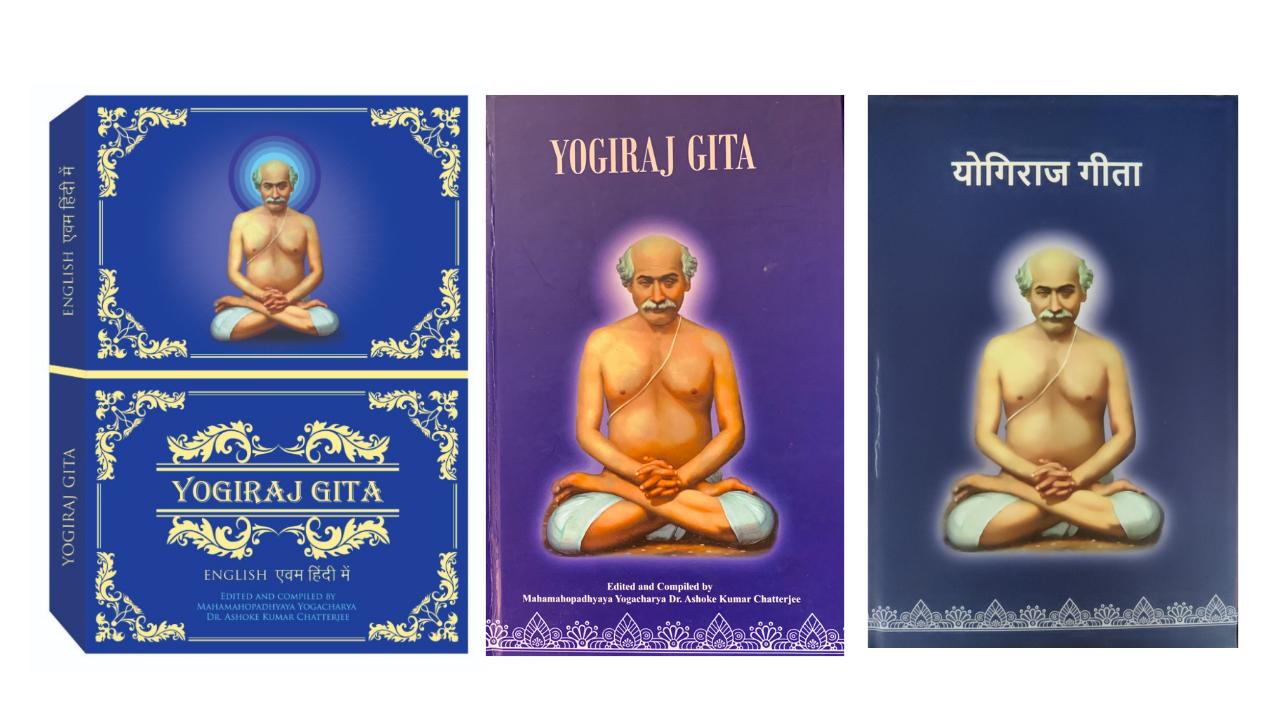Yogiraj is the Fountain-Head of Kriyayoga. “Humhi Krishna, Humhi Mahadeva, Adi Purusha Bhagavan, Hum chodai koi nahi.” So when He only is Bhagavan Krishna (1828-1895), it is inevitable that the yogic dissertations of the 18 chapters are the infallible truth. His exegesis is cryptic, precise, to the point, a veritable guide for humanity as to how to attain God, and merge in Him by becoming God Himself
Mahamahopadhyaya Yogacharya Dr A.K. Chatterjee referring to the work by Yogiraj says, “Vedanta, Gita and all other Sanatana Dharma sastras which were conversant to all rishis, munis, mahatmas, which had become decadent due to the onslaught of time; He unravelled the esoteric key to them by rendering a yogic expatiation to each of them. Scriptural texts, twenty-six in number have been yogically explained by Him and those during His lifetime were published as individual texts. These are regarded today as immortal texts in yoga literature.”
For the last thousands of years there have been various interpretations of the Gita, the holy scripture of Bharata alongwith several translations in several languages. It should be essentially noted that the Gita is an exposition of Rajayoga. It is the acme of spirituality.
The yogic connotation being Gita is the divine sastra of BhÄrata (India), a portion of MahÄbhÄrata, through which BhagavÄn Krishna spiritually directs Arjuna, representative of humanity on the battIefield, by sitting on the chariot, on the various chapters of yoga to attain God. The MahÄbhÄrata and GitÄ are not separate. They constitute the principle and technique of yogasÄdhana. As a result they are regarded as sublime spiritual texts en masse. For this reason it is not any historical narrative or epic poem or a mythological treatise. Therefore the concept of yogasÄdhana has been allegorically represented in these two spiritual texts.
The essential requisite for yogasÄdhana practice is the indomitable spirit of a hero, therefore Arjuna has been portrayed as the great hero. He symbolizes what a KriyÄbÄn should be in the true aspect. The battle waged between the two warring parties Kauravas and PÄndavas have been described in these two texts. Kauravas signify propensity towards material attachment. This propensity perpetually impels man towards materialism. Pandavas signify material detachment and impel all towards detachment. These texts expatiate the manner by which man can ward off material attachment and proceed towards the path of material detachment.
For this reason BhagavÄn (God) presented Himself towards material detachment, lent succour to the heroic yogi and eventually material detachment triumphed.
To proceed in the path of material detachment one has to become a yogi, so BhagavÄn imparted counsel to Arjuna to become a yogi sitting on the chariot. A yogi never executes massacre on the warring force through the medium of gross gory battles and Bhagavan can never advise to establish peace through the medium of mass slaughter, (it does not conform to His rules and discipline).
Yogiraj Gita is not rambling with innumerable explanatory sheets. Yogiraj Gita is not ambiguous. It is meant for yoga aspirants and surely for Kriyayoga practisioners who can glean the eternal esotery of Sanatana Yoga. Moreover Yogiraj Gita aims at honing the intellect of the inclined ones and in a gradual manner orient the disinclined ones towards the Sublime Immortal Essence — Sanatana Yoga, Kriyayoga.
The yogic connotation of this book is basically that Gita is the divine sastra of BhÄrata (India), a portion of MahÄbhÄrata, through which BhagavÄn Krishna spiritually directs Arjuna, representative of humanity on the battIefield, by sitting on the chariot, on the various chapters of yoga to attain God.





